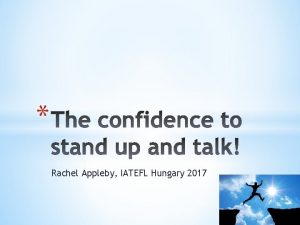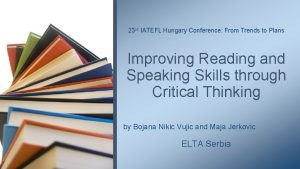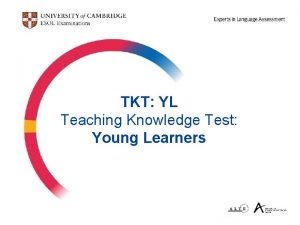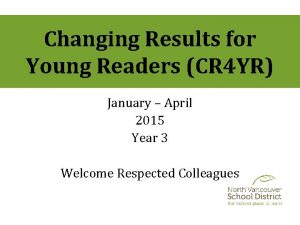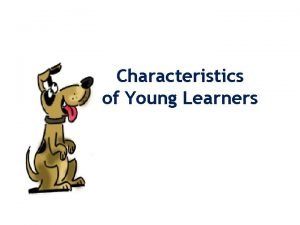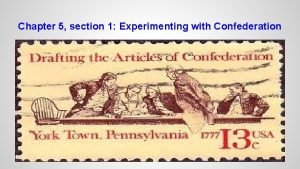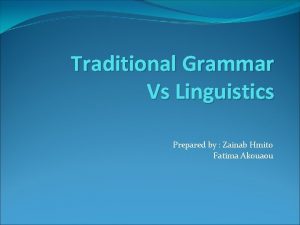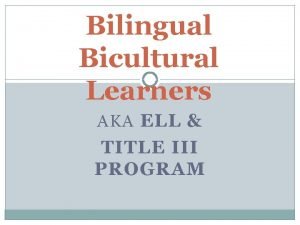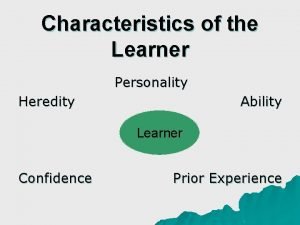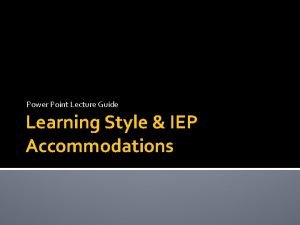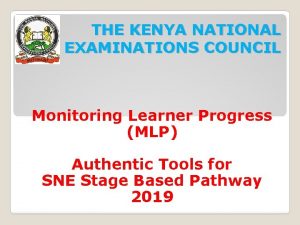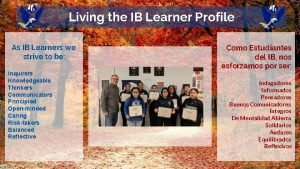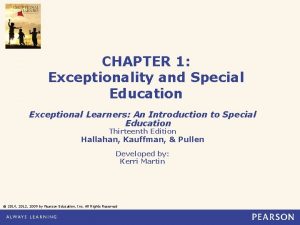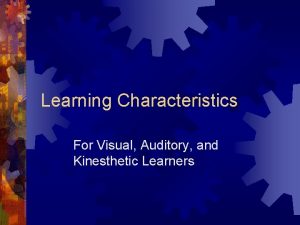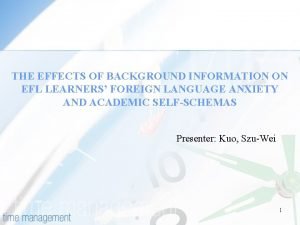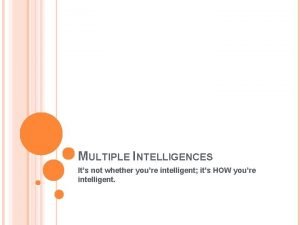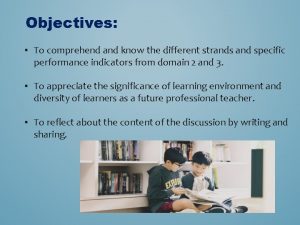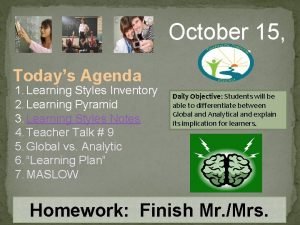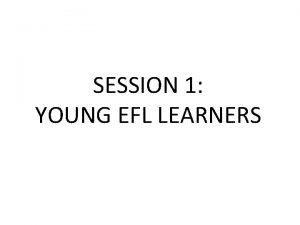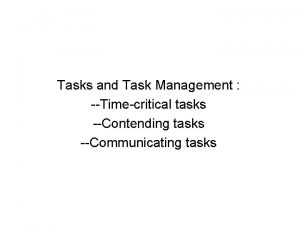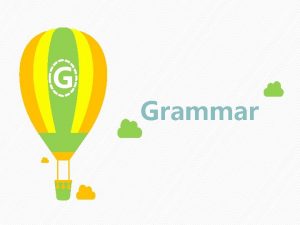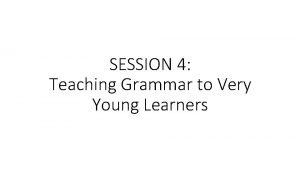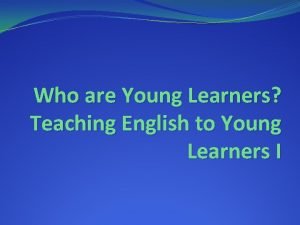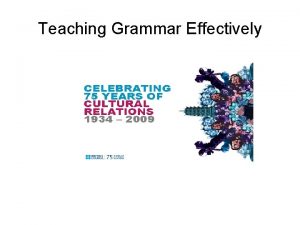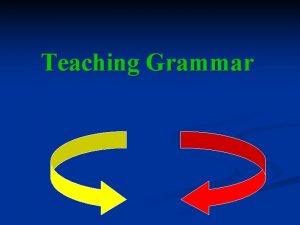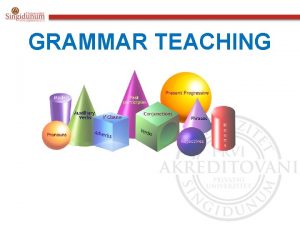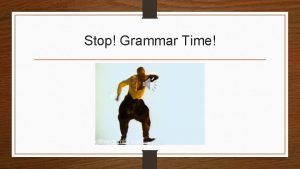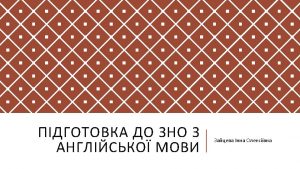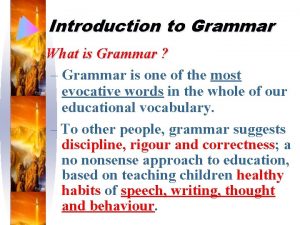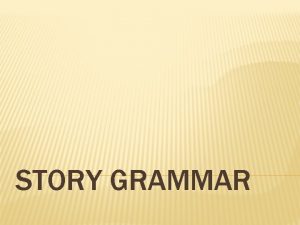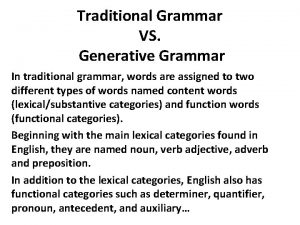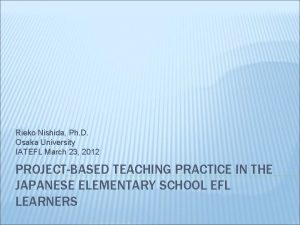Experimenting with Grammar Tasks for Young Learners IATEFL


































- Slides: 34

Experimenting with Grammar Tasks for Young Learners IATEFL CARDIFF 2009 Danae S. Tsapikidou Ph. D student in Second Language Acquisition, University of Cambridge email: dt 321@cam. ac. uk

I will present…. An experimental study on Form-Focused Instruction (FFI) in the primary classroom This study is an MPhil thesis supervised by Prof. Neil Mercer

I will outline…. The theory behind the study n The methodology n The results n The factors explaining the results n Summary/Conclusion n

Form-Focused Instruction… n n n Accelerates the natural stages of acquisition Correlates with proficiency gains Enhances capacity for complexity Prevents interlanguage stabilisation Pushes towards target-like accuracy

FFI is facilitated by… Input/Output Enhancement Restructuring Attention Noticing gap Practice Interaction Pushed Output Language Awareness

Research Questions Do young learners benefit from FFI in the context of a story-film? n Is explicit FFI better than implicit FFI? n Do under-achievers benefit equally from FFI? n

Nick Ellis definition (1994) n Implicit FFI: Nonconscious and automatic abstraction of the structural nature of the material arrived at from experience of instances n Explicit FFI: Conscious searching, building then testing of hypotheses; assimilating a rule following explicit instruction

Research design An experiment with pre-postdelayed tests n 83 learners in 4 primary EFL classes in their 5 th and 6 th year n The Simple Past (formation/usage) n 6 hours per class n April 2008, Thessaloniki, Greece n

Experiment Intact classes in alphabetical order n Group comparability set by pre-test means comparison with one-way ANOVA (p=0, 202) n Random assignment to treatments n Target tense was known n

Study design and materials based on children’s film…

Methods of Data Collection n eg. n Grammaticality judgement test (GJT) Ted was sad because he didn’t find the exhibit George sawed a yellow hat. Multiple Choice Test (MC) eg. The curious little monkey _______ happy to play. a. were b. was c. did n Written Production Test (WP) eg This is George _was_ (be) a good little monkey and always very curious. n Transcripts of audio-recorded oral communication tasks

Explicit Treatment n n n n Presentation of rules Explicit focus on accuracy n Controlled practice n Oral and written n production tasks n Meaning-based communicative drills n Metalinguistic feedback n n Questions/Answers in S. Past, Cloze test Fill-in the blanks Open cloze test Correct verb recognition Find the mistake Jumbled sentences Identify S. Past forms

Explicit Practice…. n n Did Curious George live in the city? [No, he didn’t. He lived in the jungle]

who/ George / Curious did / on / paint?

Simple past cloze This is George _was_ (be) a good little monkey and always very curious. George was looking for someone to play with. He (1). _____ (wonder) what would happen if he put a crocodile egg in a bird’s nest.

Oral Data-Explicit Group n n n n n Teacher: What did they play? Students: peek-a-boo, peek-aboo!!!!! Teacher: and the verb? Student 1: He played peek-a-boo Students: jumped, jumped Teacher: Did he…. . Student 2: catch the rope! Teacher: in simple past? Student 2: caught. . caught!. Student 3: …he caught the rope

Implicit Treatment n n n Interaction in pairs Focus on task completion Use of target feature essential for task Production tasks Real purpose of communication Opportunity to notice the gap between TL and the learner’s IL n n n n Story comparison Role-play Listening cloze test, Writing Stage directions task Picture description/ordering Picture/sentence matching Text reconstruction

Implicit Practice… n n George found a giant banana…but it was a yellow hat George and Ted played peek-aboo together

Story comparison Questions Story A Story B 1. Where did George live? He lived in the jungle He lived in Africa 2. How did George meet Ted? George saw a George saw the giant banana but man with a it was Ted’s yellow hat

Joint Writing Task Ted: Clovis, I've got a problem. (Ted looked at Clovis, worried) Clovis: Wait, just a minute. Are you returning him? What? Because I have a strict no-return policy. . . on any robotic animals I create, unless, of course, you have a receipt. (__________________)

Student A: Ivan n n Came from Serbia He was Ted’s apartment manager He did not allow pets in the apartment. He found Curious George and kicked Ted out of his apartment. n n n Name: Came from: His job was: What did he do? What happened in the end?

Student B: Clovis n n Came from the USA. He was the museum inventor. He invented the magnificator. He helped Ted magnify the tiny idol and solve his problem. n n n Name: Came from: His job was: What did he do? What happened in the end?

Oral Data-Implicit Group n n Learner 1: Eeeerr …. where did he come from? Learner 2: Eerhh …. he come from Serbia Learner 1: Where did he come from? Learner 2: Eeerrr …Came from the USA

Summary of results n n Significant pre-post test improvement in both Explicit and Implicit groups Gains in both groups significantly remained in delayed post test 2 weeks later No significant difference in improvement between Explicit and Implicit treatments No significant difference between 5 th and 6 th year groups

5 th year results n 20% improvement rate from pre to post test in both groups, fully retained in the delayed post test 2 weeks later

6 th year results n 22% and 28% pre-post test improvement rate, largely retained in the delayed post test

5 th year ability comparison n Learners who scored below the group mean demonstrated 44% rate of improvement from pre to post test, largely maintained in delayed post test

6 th year ability comparison n Learners who scored below the group mean demonstrated 74 % rate of improvement from pre to post test, lost by just 20% in delayed post test

Qualitative Data n n 75 audio-recorded pair exchanges 417 out of 482 utterances were grammatically correct Task preparation time + teacher feedback was given before acting out Learners may have monitored their oral performance for the audio-recording

Discussion n n Explicit and Implicit Fon. F are equally beneficial for young learners Story familiar context provides facilitation Learner motivation Task preparation, build-on model and presentation (audio-recorded) of interaction tasks led to monitoring, restructuring, pushed output

Support for Output Hypothesis n Output practice that leads learners to notice gaps in their IL systems, test their existing knowledge, reflect consciously on their own language, and process language syntactically is expected to be the most beneficial for L 2 development (Swain, 2005)

Limitations n n Lack of oral assessment data Role of prior knowledge Insufficient test piloting Meaningful context of the story was common for both treatments – hence all learners could make form-functionmeaning connections

Conclusion n Explicit and Implicit Form-Focused Instruction are both equally beneficial and complement each-other Ideal for remedial teaching or recycling of known structures Frequency and salience of target structures through the story facilitate conversion of input to intake

References n n De. Keyser, R. (Ed. ). (2007). Practicing in a second language: Perspectives from applied linguistics and cognitive psychology: Cambridge University Press. Swain, M. (2005). The output hypothesis: Theory and research. In E. Hinkel (Ed. ), Handbook on research in second language teaching and learning (pp. 471 -484). Mahwah, NJ: Lawrence Erlbaum Associates. Ellis, R. (2001). Form-focused instruction and second language learning. Malden, MA ; Oxford: Blackwell. Doughty, C. , & Williams, J. (1998). Focus on form in classroom second language acquisition. Cambridge: Cambridge University Press.
 Teaching grammar to young learners
Teaching grammar to young learners Iatefl hungary
Iatefl hungary Iatefl hungary
Iatefl hungary Tkt yl sample test
Tkt yl sample test Teaching young learners english
Teaching young learners english Changing results for young learners
Changing results for young learners Involuntary attention meaning
Involuntary attention meaning Experimenting with confederation
Experimenting with confederation Coming together stages relationship
Coming together stages relationship Chomsky hierarchy of grammars
Chomsky hierarchy of grammars Right linear grammar
Right linear grammar Convert right linear grammar to left linear grammar
Convert right linear grammar to left linear grammar Linguistics vs traditional grammar
Linguistics vs traditional grammar Technology for diverse learners
Technology for diverse learners English language learners
English language learners Characteristic of learners
Characteristic of learners Global vs analytical learners
Global vs analytical learners Knec mlp
Knec mlp Ib learners profile
Ib learners profile Questioning strategies to engage all learners
Questioning strategies to engage all learners National program for gifted filipino
National program for gifted filipino When is cognitivism beneficial for learners
When is cognitivism beneficial for learners Passive learning vs active learning
Passive learning vs active learning Reading strategies for english language learners
Reading strategies for english language learners Exceptional learners: an introduction to special education
Exceptional learners: an introduction to special education Visual learners characteristics
Visual learners characteristics Cr part 154
Cr part 154 Background information for learners
Background information for learners Charles darwin naturalist intelligence
Charles darwin naturalist intelligence What is global-analytic continuum
What is global-analytic continuum Diversity of learners
Diversity of learners Fairlie early learners
Fairlie early learners Global vs analytical learners
Global vs analytical learners Graham nuttall the hidden lives of learners
Graham nuttall the hidden lives of learners Assistive technology for english language learners
Assistive technology for english language learners

